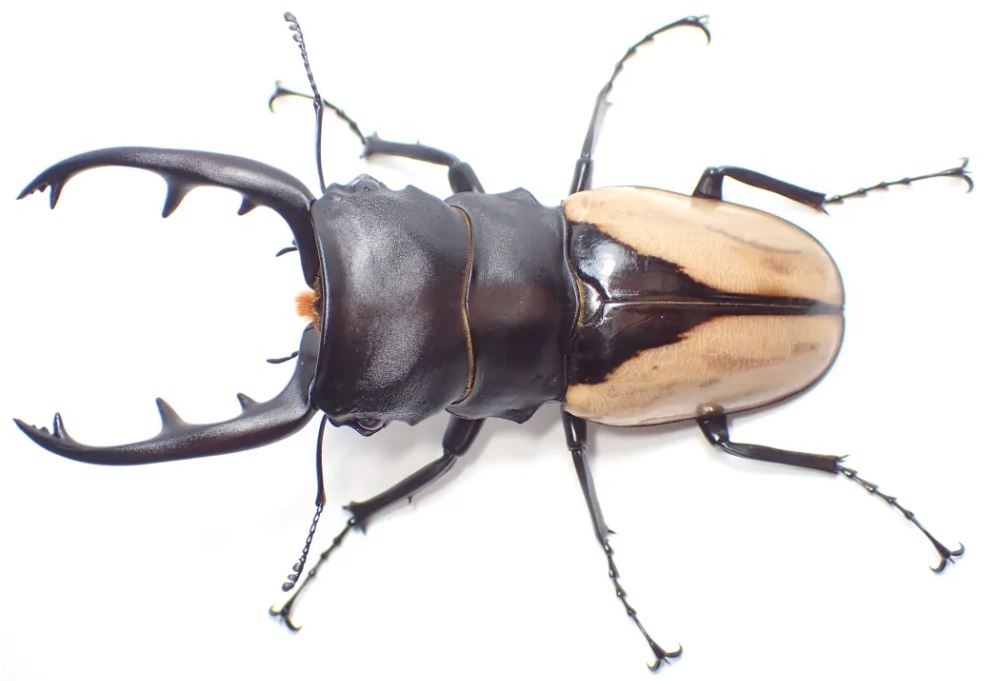
Indian Glossy stag beetle care sheet
Share
Adults:
- Size: 40-109mm
- Adult life span including dormant period: 6-12 months
- Temperature: 65-77°F
- Humidity: 40-60%
- Food: Beetle jelly or fruits(no citrus)
Breeding:
- Required temperature for breeding: 70-77°F
- Minimum container size for egg laying: 6in x 5in x 6in
- # of eggs laid on average: 25-50 eggs
- Flake soil humidity adjustment: The amount of water is appropriate when you can form a ball by squeezing the flake soil with your hand. Water seeping out of your hands during the process indicates that there is too much water.
- Set-up: Tightly press down about three to four inches of flake soil with your hands and then loosely fill the container with flake soil. Afterwards, you can put the female in the container with some sticks and jelly so that she can flip herself over if needed.
Set-up example:

Larvae:
- Food:
- Flake soil
- very decayed white-rotten wood
- Temperature: 66-75°F.
- Humidity: 60%
- Larval duration: 9-15 months
- Container size recommendations:
- L1-L2: 4oz deli cup
- Late L2-early L3: 16oz deli cup
- L3 female: 2L container and above
- L3 male: 4L container and above
- Larval behavior: This species create tunnels for feeding so it's best not to disturb them unless you need to change their substrate
- Pupation: Larvae create cocoon balls before pupating. If you don't see the larva in their usual tunnels for a few weeks, it could indicate that they are making their cocoon ball. Destroying this ball usually leads to death, especially if they are in the process of making the cocoon ball so it's recommended to just leave the container alone in a quiet place. Once they successfully make their cocoon ball, it could take a few months before they pupate.
Helpful notes and tips:
- L1 larvae of this species is prone to dying for unknown reasons; however, once they become L2, their chances of dying dramatically decreases.
- It's good to lightly press down on the flake soil after replacing the larva's substrate.
- This species is prone to producing a lot of moisture when making their cocoon balls so it's better to keep the flake soil on the drier side when they are in their late L3 stage.
- Low disturbance when the larvae are making their cocoon ball is key to producing majors. Obviously, a good flake soil is important too!